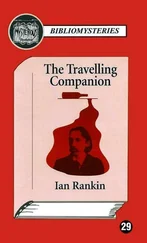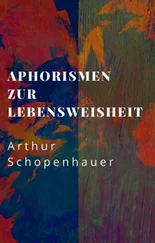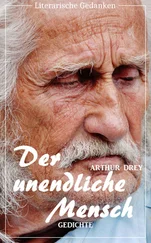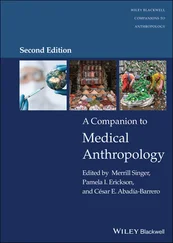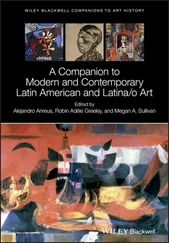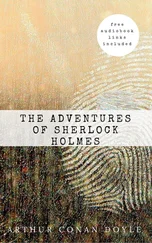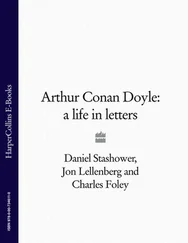A Companion to Arthur C. Danto
Здесь есть возможность читать онлайн «A Companion to Arthur C. Danto» — ознакомительный отрывок электронной книги совершенно бесплатно, а после прочтения отрывка купить полную версию. В некоторых случаях можно слушать аудио, скачать через торрент в формате fb2 и присутствует краткое содержание. Жанр: unrecognised, на английском языке. Описание произведения, (предисловие) а так же отзывы посетителей доступны на портале библиотеки ЛибКат.
- Название:A Companion to Arthur C. Danto
- Автор:
- Жанр:
- Год:неизвестен
- ISBN:нет данных
- Рейтинг книги:5 / 5. Голосов: 1
-
Избранное:Добавить в избранное
- Отзывы:
-
Ваша оценка:
- 100
- 1
- 2
- 3
- 4
- 5
A Companion to Arthur C. Danto: краткое содержание, описание и аннотация
Предлагаем к чтению аннотацию, описание, краткое содержание или предисловие (зависит от того, что написал сам автор книги «A Companion to Arthur C. Danto»). Если вы не нашли необходимую информацию о книге — напишите в комментариях, мы постараемся отыскать её.
Companion
A Companion to Arthur C. Danto
A Companion to Arthur C. Danto — читать онлайн ознакомительный отрывок
Ниже представлен текст книги, разбитый по страницам. Система сохранения места последней прочитанной страницы, позволяет с удобством читать онлайн бесплатно книгу «A Companion to Arthur C. Danto», без необходимости каждый раз заново искать на чём Вы остановились. Поставьте закладку, и сможете в любой момент перейти на страницу, на которой закончили чтение.
Интервал:
Закладка:
Danto began with Buffon’s classic dictum (1753): “style c’est l’homme même” – style is the man himself. How did Danto interpret this dictum? Let us turn to an example of visual art: Lichtenstein’s “Portrait of Madame Cézanne” (1963) reproduces Erle Loran’s diagram of Cézanne’s famous painting of his wife. Loran’s diagram, included in his book, Cézanne’s Composition , attempts to show the geometric structure of the painting using lines, arrows, and vectors. Visually, says Danto, Lichtenstein’s picture and Loran’s diagram are roughly the same. However, the former is a work of art and the latter only a diagram. Why?
Danto used this example to distinguish between a straightforward representation – a diagram – and a picture that is about a diagram (Danto 1981, 141ff). Lichtenstein’s artwork is about the way Cézanne painted his wife. In other words, Lichtenstein was presenting with a certain ironic distance, how Cézanne looked at the whole world, namely, as geometric figures, as diagrams. Even his wife was seen in this fashion. Lichtenstein’s canvas, according to Danto, tried to inspire a certain critical attitude toward this “geometrizing vision.”
Danto’s main point, however, was that works of art, in contrast with mere representations, use the means of representation so as not to exhaust what one is communicating in what is being represented. His suggestion was that “in addition to being about whatever they are about, (artworks) are about the way they are about” (Danto 1981, 148–149). Style has precisely to do with “the way” artworks “are about whatever they are about.” So, Cézanne’s apples, thanks to his style, are not just about apples, but about apples as seen by Cézanne. This is how we need to interpret Buffon’s dictum.
Danto further believed that “style has to be expressed immediately and spontaneously.” He thought style was visible to others and invisible to the self, like “my face is visible to others but not to myself” (Danto 1981, 206). I don’t think Danto got this right. Style is not at all immediate and spontaneous. Take Flaubert: “One has to read, to meditate, to think always about style. … Patience and constant energy are required” (Flaubert, 13/13/1846). 1His letters show how much he struggled to achieve the style he was aiming at. Or Hemingway: “Since I started to break down all my writing … and try to make instead of describe, writing had been wonderful to do. But it was very difficult…” (Hemingway 1964, 132). Hemingway’s style was not spontaneous but the result of a conscious and sustained effort.
Flaubert wrote that “style is only a way of thinking” (Flaubert 1859). What Danto said of Lichtenstein’s “Portrait of Madame Cézanne” is a sample of Danto’s style as a philosopher. Style is not something added to what the work of art reveals, so to speak, but it is part of the revelation. As Nussbaum asserts, “style makes itself a statement” (Nussbaum 1990, 7). Danto’s thesis about style is analogous to what Proust wrote in À la recherche du temps perdu : “style … is not a question of technique but of vision.” Proust believed that style “is a revelation” of “the uniqueness of the fashion in which the world appears to us.” Thanks to art we have “as many worlds as there are original artists” and each one sends us “his special radiation” (Proust 1927, 254). Danto was a good reader of Proust; I remember him quoting from Proust’s novel very often in his seminars. This was when he was writing The Transfiguration of the Commonplace .
Danto draws his idea of style (Danto 1981, 163) from Frege’s notion of Färbung (coloring). Frege also uses the word Beleuchtung (shading). Dummett calls this aspect of language, “tone.” (Dummett 1973, 2, 84) The difference between terms like “perspiration” and “sweat” or “dog” and “cur” or “horse” and “steed” turns more on their tone than on either their sense or their reference. Tone draws on with subjective associations, “the mood,” the “feeling” of the hearer or reader or the “atmosphere” of a poetic language or “aura” (Frege 1892a, 1892b, 1897, 1906a, 1906b, 1918). Tone allows and prevents substitutions, say, between “dog” and “cur.” At the same time, Danto recognized that insofar as “Färbung” for Frege was a “dismissive” term, it little helped us to understand what style is or why it matters (Danto 1986, 136–137). But if style for Frege was only a matter of tone, for others it bore on sense (Kortum 2013), allowing it to bring cognitive import to subjective associations which, I think, was Danto’s real intention.
A work of art is “about something” and an embodiment of that aboutness. There is nothing in the object itself that makes it an artwork. It is our gaze, our way of looking at it from the point of view of the concept of art: what makes it art. This is, roughly, what Danto meant. If an object is seen as a work of art, it requests an interpretation, and this means one has to deal with the material embodiment of the work. For Danto, as for Adorno, interpretation is essential. Adorno considered works of art as “enigmas” or “question marks,” awaiting “their interpretation.” Interpretation sustains the “demarcation line between art and non-art” (Adorno 1970, 124, 128). Danto writes that “the question of when is a thing an artwork becomes one with the question of when is an interpretation of a thing an artistic interpretation” (Danto 1981, 135). His extensive art criticism focuses, then, on the way artworks are about.
For Danto, to interpret is “to grasp the metaphor that is always there” (Danto 1981, 172). Metaphors and style are not only present in artworks. Moore, Wittgenstein, Quine had style. Romeo sees Juliet as the sun; Benjamin Franklin saw George Washington as the sun. In fact, at the very end of the Constitutional Convention – presided over by Washington – Madison reports hearing the following conversation: “Whilst the last members were signing it (the Constitution) Doctor Franklin looking towards the President’s Chair, at the back of which a rising sun happened to be painted, observed to a few members near him, that painters had found it difficult to distinguish in their art a rising from a setting sun. I have, said he, often and often in the course of the Session, and the vicissitudes of my hopes and fears as to its issue, looked at that behind the President without being able to tell whether it was rising or setting: But now at length I have the happiness to know that it is a rising and not a setting Sun” (Farrand 1911, 648). Franklin’s witty remark had style, but he did not, with his analogy, thereby create an artwork. The presence of a metaphor and the demand for interpretation are insufficient to draw the demarcation line between art and not-art. Danto knew this by delivering necessary but not sufficient conditions for something to be art.
Danto loved Chardin. Proust wrote that Chardin “brings together objects and people in these rooms that are more than an object, and even than a person, perhaps, being the scene of their existence” (Proust 1895, 20). Diderot wrote about Chardin’s “handling” as “so magic.” Danto saw “acts of transfiguration … of the commonplace. Transfiguration is not much of an improvement on magic,” he explained, “but at least it gives us a model: Christ appears to his disciples as transfigured.” But then he insisted that the religious analogy would not lead us to understand “how by means of paint and varnish” Chardin achieved his “miracle” (Danto 2005, 37).
A painting by Chardin, “Still life with plums” (ca 1730), 2says all it has to say with forms and shades, and with brushstrokes. We see the brushstrokes as some plums, the one closest to the viewer perhaps overripe and about to split open, a half-empty bottle of red wine, a simple glass with water and two baguettes. The bottle and a baguette are partly seen through the clear glass and water. All rests on a thick, wooden, humble table. The brushstrokes are not just brushstrokes: they are more to make the bottle of wine, the plums, the glass, the bread, and the worn-out table. The scene expresses a certain mood. Common objects are transfigured by the artist’s gaze. We see an entire way of life. Here is the “magic,” how he creates the feeling of being at home in this world, a feeling of love in the way he looks at these things.
Читать дальшеИнтервал:
Закладка:
Похожие книги на «A Companion to Arthur C. Danto»
Представляем Вашему вниманию похожие книги на «A Companion to Arthur C. Danto» списком для выбора. Мы отобрали схожую по названию и смыслу литературу в надежде предоставить читателям больше вариантов отыскать новые, интересные, ещё непрочитанные произведения.
Обсуждение, отзывы о книге «A Companion to Arthur C. Danto» и просто собственные мнения читателей. Оставьте ваши комментарии, напишите, что Вы думаете о произведении, его смысле или главных героях. Укажите что конкретно понравилось, а что нет, и почему Вы так считаете.

